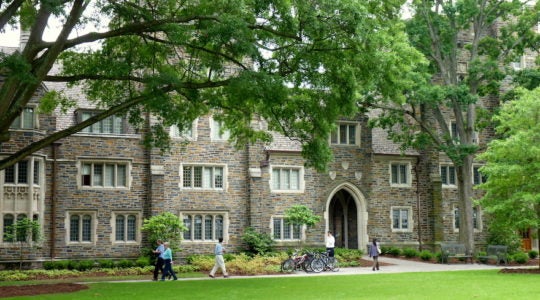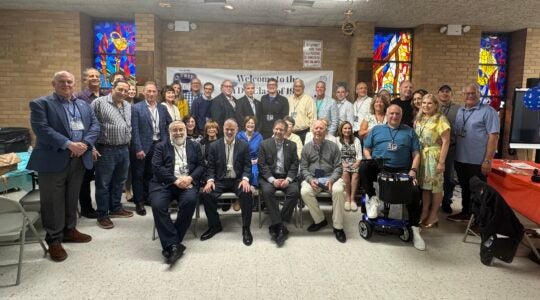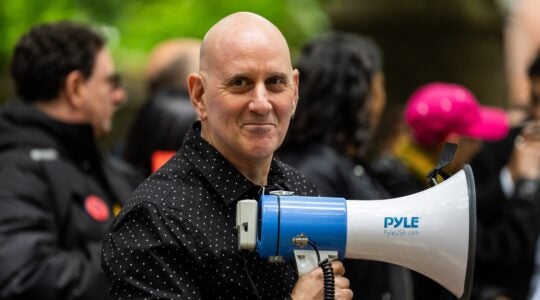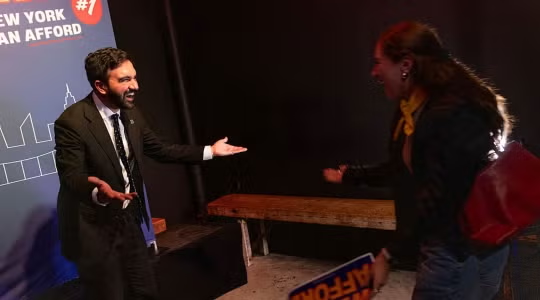Allison Laichter, a darling of the Jewish communal world roundly hailed as a promising young leader, is out of a job.
The co-founder of the Jewish Meditation Center in Brooklyn, Laichter did everything right. She won the triple crown of communal support for start-ups like hers: the Joshua Venture Group fellowship for social entrepreneurs worth over $100,000, and spots in both Bikkurim, the nonprofit incubator, and the Slingshot Guide, an annual publication of innovative Jewish non-profits. She built an organization with a 2,500-name mailing list and partnered with some of the area’s most high-profile institutions, like the powerhouse Reform synagogue Congregation Beth Elohim in Park Slope, on programming.
Yet Laichter is stepping down as the JMC’s director as of the end of this year, and an all-volunteer staff will lead and support it. Her situation shines a light on nonprofits’ complex relationship with small donors, who are necessary to organizations’ health, yet often not in themselves sufficient to sustain the groups they support.
“The community did not reach the fundraising goals that we set, which was not surprising,” Laichter said, noting that most of the JMC’s members are young, at the beginning of their careers and do not have any philanthropic background. “The community raised more money than they ever had before, but it just wasn’t enough to keep a staff, even me, who had a very low salary.”
Of course, the definition of “small donor” varies from group to group. The median annual charitable contribution Americans make is $2,564, 4.7 percent of median discretionary income, the Chronicle of Philanthropy reported this past summer. But for a group like Laichter’s, whose annual budget is only $170,000, a gift of $500 is big. Over the summer, when the JMC made a final fundraising push to try to meet its budget, the average donation was $65, Laichter said.
When it worked, having a base of small donors was wonderful, she added. “To do our weekly sit, the rent was $100 a week, so when someone made a $100 contribution, [their benefit] was very tangible,” she said.
But in the end, the JMC couldn’t afford to keep her.
In the era of the “mega-donor,” when members of the 1 percent like Sheldon Adelson and Michael Steinhardt have the power to reshape the Jewish world by creating a colossus like, say, Taglit-Birthright Israel, small donors have reason to feel frustrated by the limits of their impact and, sometimes, underappreciated as well.
“Historically, we’ve highlighted the big gifts with big plaques and public recognition,” said Robert Evans, a principal at EHL Consulting, based in Willow Grove, Pa., which advises nonprofits on fundraising and has a large practice in the Jewish community. “Organizations, of course, try to show appreciation to their donors and it comes down to the fact that the most visible gifts are large gifts.”
It’s true that unlike JMC, some groups can survive and even thrive on a base of small donors, said Andres Spokoiny, chief executive officer of the Jewish Funders Network, a service organization for philanthropists who give a minimum of $25,000 a year. The International Organization of Christians and Jews is one such group, he said, adding that “crowdfunding” websites that solicit donations for a group of charities could help Jewish groups generate a larger number of smaller contributions.
The American Friends of Magen David Adom, for example, has followed its smaller donors online, said CEO Arnold Gerson. Its investment in web-based fundraising — it just launched a new website — has resulted in a 10 percent annual increase in online donations since 2009. And between 2010 and 2011, the organization lowered its cost to acquire an online donor by a third.
“Of course, for one of our larger gifts — like one of our ambulances — [donors] will still call us,” Gerson said. “But we’re always diversifying our technology to accommodate new giving patterns.”
But in general, most Jewish communities don’t have the critical mass to rely on small donations, Spokoiny said: “If you’re running a campaign among Evangelical churches, you have around 50 million potential donors … so a big organization can make it by raising small funds.”
Also, smaller donors were hit hardest by the recession that ended in 2009, Evans said. Economic growth remains slow.
“The lower end was hurt disproportionately,” Evans said. “That’s where people were out of work, that’s where people are pressured.”
In the broader world of nonprofits, organizations commonly see 20 percent of their donors generating 80 percent of their funds, Spokoiny said. But in recent years, he has sensed a skewing of this ratio toward something approaching 90-10.
Indeed, it’s easy for nonprofits to conclude that spending precious resources on the pursuit of small donors isn’t sound strategy, , said Spokoiny and Evans, but both warn against that kind of thinking.
“It always makes “economic sense” to go after a few big donors because it costs the same kind of effort to build a relationship with an owner who is small and an owner who is big,” Spokoiny said.
Evans has clients who came to him believing this, he said, and he tries to advise them that donors of all levels are important. Big donors’ belief in the value of their gifts, for example, is reinforced when they witness giving at a variety of income levels.
Also, it’s hard for an organization to know which small donor can or will become a big donor, Spokoiny said.
These are notions that the UJA-Federation of New York says it’s taken to heart, said Reuben Romirowsky, vice-president of the federation’s affinity division, which introduces federation supporters to others who are in a similar profession or live in the same area.
He acknowledges that federations have a reputation for ignoring small donors but insists that in New York’s case, at least, that’s not the case.
Almost three-fourths of the local federation’s 125 fundraisers focus on donors who give $1,000 a year or less, he said. “Most gifts that become larger start out as small gifts,” he said. “The misnomer about large campaigns is that small donors never matter, [but] virtually every donor starts out at a low level.”
The bottom line: most Jewish organizations don’t enjoy the federation system’s army of fundraisers. Pursuing small donors can be difficult for Jewish organizations to do, said Will Schneider, director of the Slingshot Foundation, which supports Jewish start-ups and publishes an annual guide to innovative Jewish organizations. It’s tempting to rely on the mega-donors, and fundraising staffs are often too small, he added. Before Slingshot, Schneider worked as a fundraiser for his alma mater, New York University.
“When I worked for NYU, there were literally hundreds of fundraisers. Many of them were out at meetings full-time, meeting with alumni and making [requests] of $1,500, $500, or less,” Schneider said. “Ideally, we’d be leaning on our big donors while … building the new giving streams with smaller donors.”
The New York Jewish Week brings you the stories behind the headlines, keeping you connected to Jewish life in New York. Help sustain the reporting you trust by donating today.




